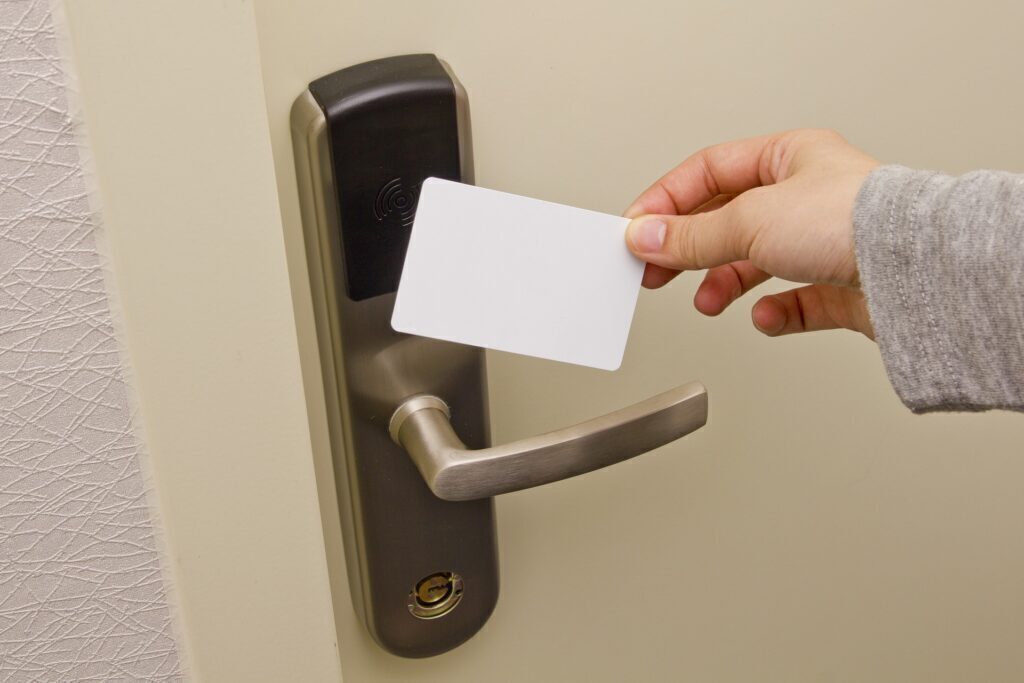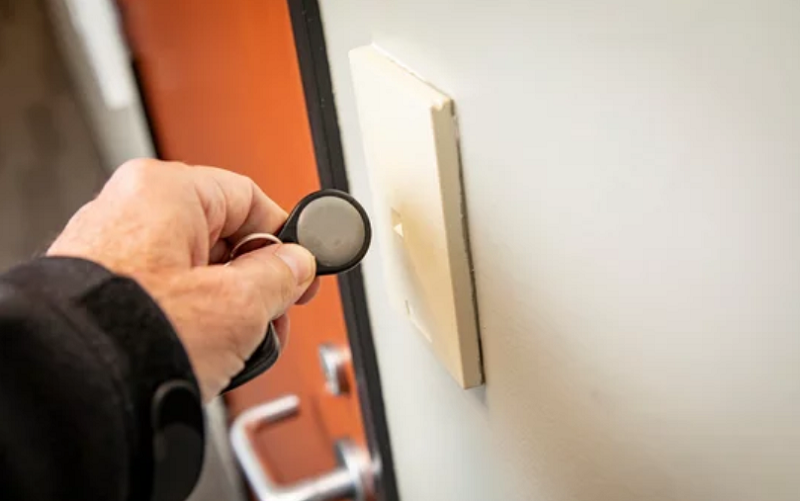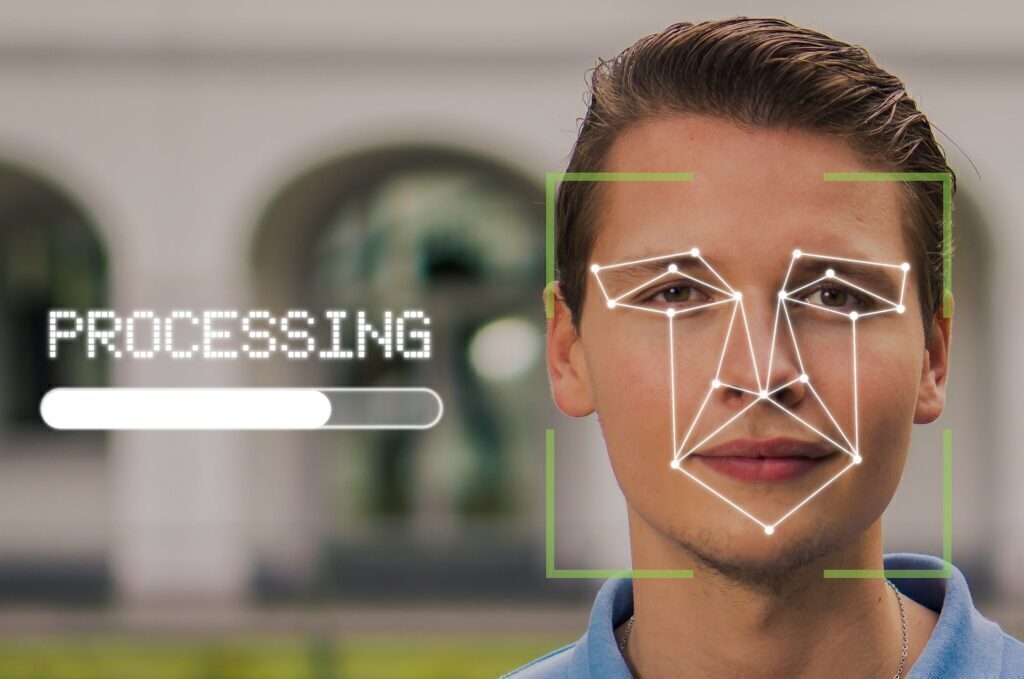Ensuring that only authorised people can enter and exit your business premises, also known as access control, is the foundation of good physical security. Fortunately, it’s easy to do that today thanks to advances in security tech. Let’s examine five ways you can secure your business premises with smart technological solutions.
Access Cards
Cards with Radio Frequency ID (RFID) chips in them are probably the most popular form of access control. Cards can be coded to the user’s identity and swiped at electronic readers that read the information on the card and unlock the doors that the person has been given access to by the business.

Access cards are about the size of a credit card but slightly thicker, and are generally worn around the neck on a lanyard for easy access. They also fit easily into wallets, purses, and pockets.
Key Fobs
Key fobs are small plastic devices that fit easily onto key rings. They use a variety of technologies to communicate with access control systems to verify the identity of the person carrying them: NFC, Bluetooth, or RFID.

As these technologies allow the fob to be read at a distance, key fobs don’t have to be swiped across a reader or inserted into them, and so are somewhat more convenient than access cards for allowing people into and out of restricted areas.
Biometrics
Biometric access control systems use the human body’s unique physiological characteristics to verify the identities of the people attempting to enter your business premises. These operate on the principle that every human body is unique and that faking things like iris scans, fingerprints, and facial scans is very difficult to do.

The most popular biometric verification technologies include:
- Fingerprint recognition: Patterns and ridges on an individual’s fingerprint are analysed and compared to scans on file.
- Iris scanning: Eyes are scanned to pick up the unique patterns in a person’s iris (i.e. the coloured part of the eye)
- Facial recognition: Facial features and overall facial structure are analysed in real-time and compared to scans on file. These can’t be fooled by photos of authorised people as they can detect depth and heat using infra-red camera technology.
- Palm print scanners: This uses the same principle as fingerprint scanning, except it’s the ridges and patterns of the palm that are scanned, which form a unique palm print for the system to read.
- Voice recognition: A person’s voice is recorded and analysed by advanced analytics software to verify their identity. Recordings can’t be used here either, as these systems should have the necessary intelligence built in to tell the difference between a live voice and a recording.
Keypad Entry
Perhaps the simplest form of entry control that’s more advanced than a literal key and lock is a keypad entry system. This replaces locks operated by keys with a digital number pad. Entrants must enter the correct number to unlock the door.
This way, people don’t need to carry around cards or fobs with them and must instead just remember the correct combination. This is less secure, of course, as people are quite forgetful, but it’s a good place to start if your access control needs are relatively straightforward.
Smart Locks
The most advanced method of access control in this list is the “smart lock”. That’s because smart locks connect to the internet and let you control their functions with a smartphone app. That means keyless entry, remote unlocking, and a log of who comes and goes. If you go high-end enough, you’ll also have a facial record of those who are looking to gain entry.
Smart locks need batteries to work, and that’s the biggest downside, but we have it on good authority that these typically last up to six months before needing replacement.
Talk to the professionals
Of course, we won’t tell you which of these is best for your specific needs. That’s a more complicated question than we’re able to answer here. Instead, we encourage you to speak to a professional security consultant to come up with a way to secure your business premises that suits your situation and your budget.